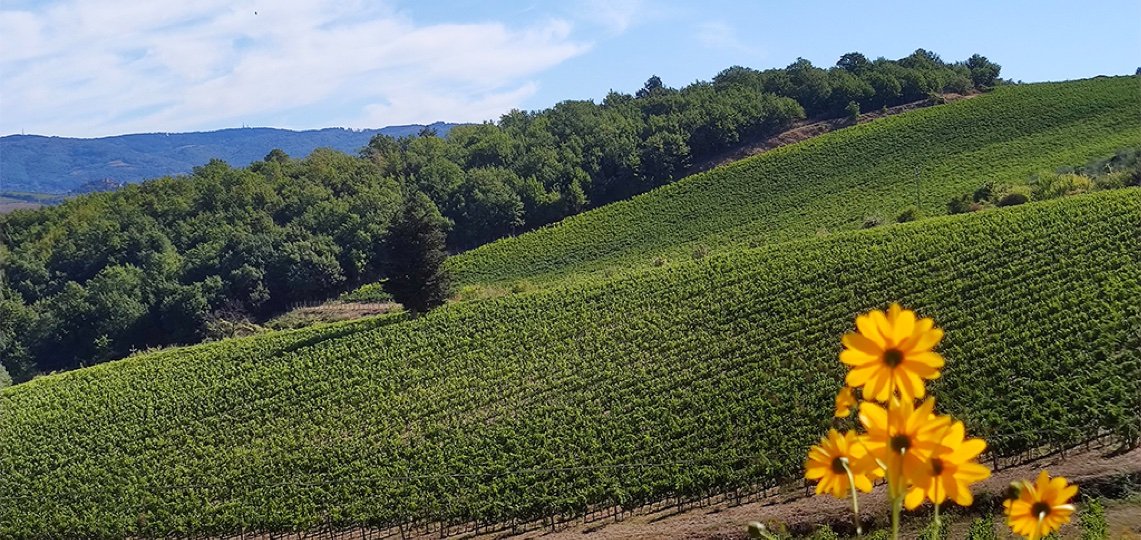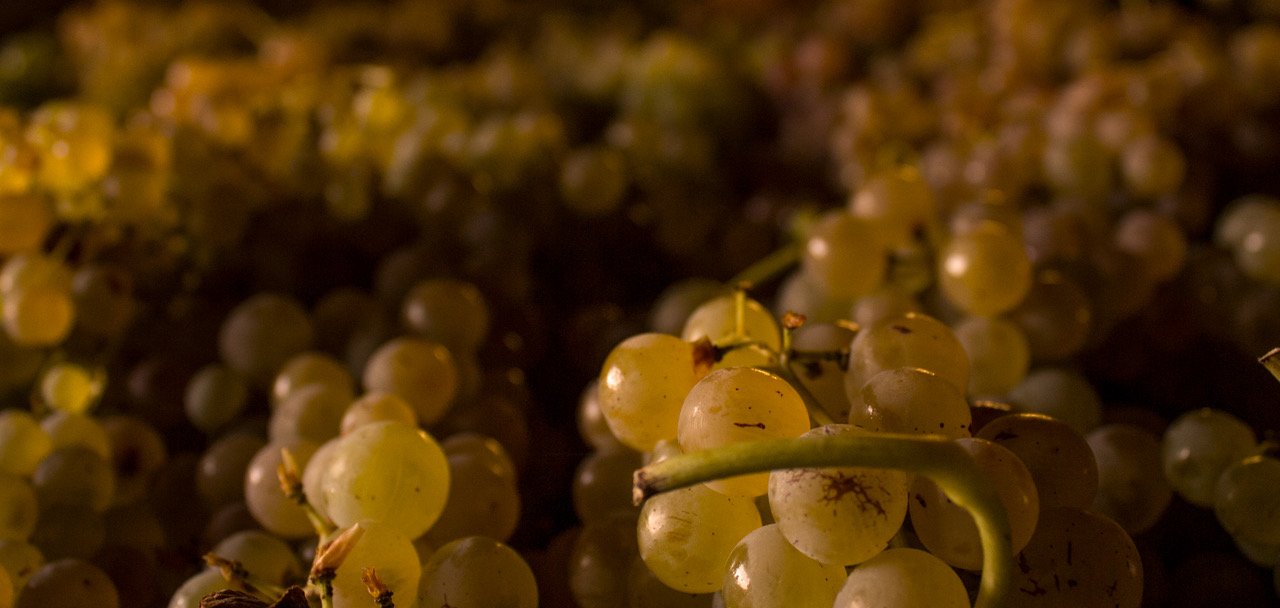Pieve di Campoli
BACKGROUND
The Azienda agraria Pieve di Campoli was established with the intention of bringing together in a single productive entity, the many real estate properties and land with an agricultural vocation of the Archdiocese of Florence. In 1985, following the establishment of the Diocesan Institute for the Support of the Clergy - created with the aim of administering ecclesiastical benefits - the farm was also formed. The farm is located in the province of Florence and has an extension of hundreds of hectares that wind through the lands of 7 municipalities.
The farm includes more than 50 hectares planted with vineyards, located within the territories of the Chianti and Chianti Classico consortia and more than 18,000 olive trees planted on an extension of about 100 hectares of land scattered throughout the province that make the farm, one of the largest olive-growing realities in the Florentine area.
The Pieve di Campoli company was born out of the desire to reconcile two important and central aspects that still make up the company's philosophy: that of recovering land owned by the Florentine archdiocese, giving rise to products of excellence, and that of creating income through work; our mission could be summed up with this phrase "putting the Personat the center."
The company's will is to start from a great raw material and transform it into a process of constant growth and improvement of both its products and the people who work within it.
What comes from the earth is transformed by human hands to take on a better form; man himself gives thanks to Creation for its fruits, elevating himself through his own labor.
The Terroir
In Cortine, where the winemaking cellar and cooperage reside, excellent wine was already being produced long before the company was founded. It was made by the priest of the small rectory, Don Agostino Giotti, with vines now a hundred years old that still exist and endure, in the vineyards adjacent to the church.
Together with the farmer who helped him with farm work, he would proceed with those processes that, before being such, were true rituals of peasant culture. Vines were carried according to the two historical forms of cultivation of the "Tuscan capovolto" and that of the vine "maritata" to saplings of poplar, elm or pear, according to traditions that are lost even in Etruscan culture.
So it was that word spread in the surrounding villages of a legendary, delicious wine made "by the priest" of Cortine, who jealously guarded it for himself and the few who were lucky enough to taste it.
From 2019 Cortine becomes the name of a company line that in homage to the history of the place and its protagonists aims to create a product of excellence that is an expression of the vineyards of the area.
The winery's vineyards are located within the perimeter of two municipalities, within two DOCGs and in which five large wine-growing areas measure a total of about 50 hectares. Each with distinctive microclimatic characteristics that are a direct expression of the wines produced from vineyard to vineyard.
The influence of terroir in wines is an asset, and the variety of altitudes and microclimates result in different wines, each an expression of the vineyard of origin.
All of the winery's vineyards are on hillsides or terraced slopes with varied exposures but all characterized by conditions that guarantee the best yields in terms of quality.
Some of the vineyards are historic plantings, with vines over half a century old. The most vocated ones have been chosen to become true crus with the aim of maximizing the special conditions of the microclimate, soils and rootstocks planted.
Dominating the scene among the estate's grape varieties is certainly Sangiovese Toscano, present in several varieties with some clones, taken directly from the historical plants of the most ancient vineyards. Other traditional regional grape varieties find space in our soils: Malvasia Bianca and Trebbiano for the white grapes, Canaiolo and Colorino for the black ones. Rounding out the spectrum of grapes are the international Merlot and Petit Verdot and the distinctive Pugnitello, an indigenous variety of Tuscany that has found its own vocated location, in the Vigna della Cipressa vineyard in San Donato in Poggio.
vin santo
Vinsanto has ancient roots and there are many credited versions on the origin of the name; for Pieve di Campoli there is no doubt: the name comes from its use during religious ceremonies. According to an unbroken tradition, even today the bottles are produced according to traditional methods and are placed on the market only after meeting the liturgical requirements of the Cathedral Chapter. This is the vinsanto of the Cathedral of Florence. The vin santo, is produced according to the most traditional and ancient method, but above all by exclusively natural withering. That is why it is made only in selected vintages, following the quality level in the vineyard, of the grapes.
The resulting blend, is unique and is also the result of several vintages, all of them excellent.
THE WINE
chianti classico
Cortine DOCg
Ruby red color. It presents itself to the nose with an olfactory succession where ripe, fruity, floral, and spicy notes predominate. Full bodied, balanced and soft in the mouth, rightly tannic and persistent.
Grape variety: 90% Sangiovese, 10% Canaiolo and Colorino
Area: municipality of Barberino Tavarnelle
Elevation: 300-370 meters above sea level
Harvest: Mid October by hand
Vinification: In concrete tanks with medium-long maceration under controlled temperature
Maturation: 12 months in second passage French wooden barriques, followed by 3 months in the bottle
ABV: 13.5%
cortine canaiolo igt
Intense ruby red color. On the nose, pleasant fruity scents, floral notes and fragrances reminiscent of toast and bread crust. Pleasantly balanced and ready to drink. Structured and persistent.
Grape variety: 100% Canaiolo
Area: municipality of Barberino Tavarnelle
Elevation: 300-380 meters above sea level
Harvest: End of September by hand
Vinification: Fermentation is carried out in cement before aged in barrel
ABV: 13.5%
Cortine pugnitello igt
Purple-red in color with pleasant fruity aromas and floral, spicy, and balsamic notes on the nose. Balanced, despite a clear acidity which is combined with a deep and silky tannic texture. The mouthfeel finish is long and persistent. Even in its early years, the wine is pleasant but the varietal characteristics evolve with time, ensuring a long-life for the product.
Grape variety: 100% Pugnitello
Area: municipality of Barberino Tavarnelle, San Casciano val di Pesa, Campoli area
Elevation: 330-350 meters above sea level
Harvest: Late September by hand
Vinification: Fermentation is carried out in cement before aged in barrel
ABV: 13.0%
vin santo del chianti classico pieve di campoli DOCg
Produced using the most traditional methods, the Vin Santo del Chianti Classico Pieve is the company true flagship. Amber yellow in color. The nose presents a complex bouquet where hints of dried fruit ad caramelized notes predominate. In particular, the aromas of date and dried apricot predominate. When tasted, it reveals itself as harmonious, soft, and velvety with good structure.
Grape variety: Trebbiano Toscano, Malvasia
Area: Produced only in the best years and with the best selected grapes from the municipality of San Casciano in Val di Pesa.
Elevation: 200-260 meters above sea level
Harvest: End of September by hand
Drying: On racks, in room temperature and with a natural drying process
Fermentation and refinement: After pressing, in oak barrels for at least 60 months
ABV: 13.5%









